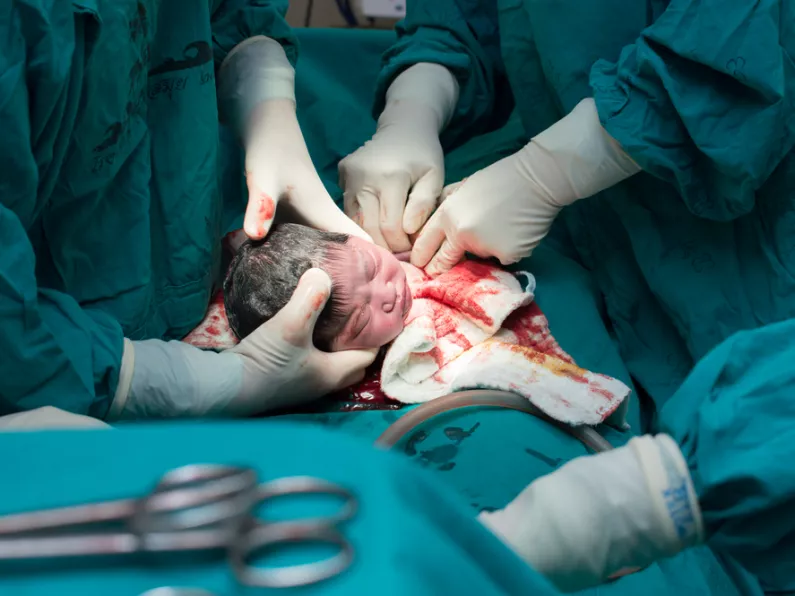The day is finally here, the day of delivery, and you are for a c-section - or maybe you were in labour be it spontaneous or induced and your Obstetrician is informing you that a conversion to a cesarean delivery is now required.
How do I prepare, and how long will the recovery period be are questions often asked by expectant mothers.
A detailed discussion between mom and her Obstetrician will go a long way in alleviating any concerns about the procedure and will assist greatly in the preparation for the procedure.
Elective cesarean
If you are having an elective or scheduled cesarean section due to a condition that has developed prior to labour which will prevent a safe vaginal delivery, you should have your pre-operative delivery discussion prior to admission to hospital.
This allows for any additional family members to be present if requested or necessary, and for any particular preparation that may be required that is not standard to the institution where the delivery is taking place.
Elective c-sections are most commonly scheduled for 39 weeks of gestation. However, if there are mitigating circumstances requiring an earlier date, these can be discussed at this time.
Pre-Procedure investigations/tests
You'll most commonly have a complete blood count prior to a cesarean section to assess your haemoglobin (blood count). This can be performed prior to admission if you're assessed as low risk and haven't had one within the previous 30 days.
High risk patients who require additional investigations and consultation with other health care providers should have these done prior to their pre-operative visit and the results and recommendations - if any - discussed prior to admission.
Pain Relief
A common question prior to a c-section is 'will it be painful?'
There are now many techniques that we can use to prevent pain during the procedure and reduce it after.
At the pre-operative consultation, you can request to have a consultation with the Anaesthetist where the different methods that will be used are discussed and the best choice for you can be made.
The two most common techniques of Anaesthesia used for cesarean sections are:
- Neuraxial Anaesthesia where the patient has medication placed within the spinal canal via an injection and/or an epidural catheter which removes the sensation of pain from the abdomen and legs, “making them numb”. This has the benefit of mother being awake during the procedure so she can have contact with baby immediately after birth. This also allows the presence of the patient’s partner during the procedure to provide emotional support.
- General Anaesthesia where the patient is put to sleep. This is used for acute emergencies or if the patient is unable to get a neuraxial technique, such as if they have a spinal deformity or an allergy to the medication.
Urgent/Emergent c-section
During the labour process, changes in the maternal or fetal status may require a conversion from a vaginal delivery to a cesarean delivery to ensure the safety of mother and fetus. Time is of the essence! This discussion should include:
- Indication: The reason for the conversion to cesarean section
- Procedure: Steps associated within the procedure and those leading up to the procedure
- Possible Complications: Any that are associated with the procedure
- Post-Operative Care
Post- Operative Care and Recovery
A concern often expressed by moms prior to a c-section is how soon will they recover from the procedure.
The recovery time varies based on individual patient features, complexity of the procedure, and the indication of the procedure.
However, with modern recovery techniques, patients are returning to their usual state of wellness in shorter periods of time than ever before.
Movement
Patients are encouraged to move around as soon as possible after a cesarean section.
Early ambulation is associated with faster recovery of the gastro-intestinal system and the reduction of abnormal clot formation in the legs or lungs.
Nutrition
Patients who have had an uncomplicated procedure can resume oral intake within six hours after the procedure.
Adequate nutritional support improves wound healing and lactation.
If a Nutritionist is available at the hospital or within the community, a consultation may be very helpful.
Catheter Removal
Removal of the urinary catheter (the tube placed in the bladder) as soon as possible after surgery facilitates early ambulation and reduces the risk of urinary tract infection.
This will be dependent on mom being fully recovered from the anaesthetic used during the procedure.
Exercise
Exercise after delivery improves the recovery process. But don’t overdo it.
What do I mean by that?
Discussion about the goals of physical activity after cesarean section should take place prior to the c-section.
The fitness goals should be guided by the patient's pre-conception fitness level in conjunction with a certified physical trainer who ideally has training in maternity care.
In general, a gradual increase in physical activity is advised within the first three weeks after the procedure.
Walking graduating to more vigorous cardiovascular exercise may be most suitable.
After week 3, an assessment can be made as to the patient's ability to tolerate more intense physical activity.
Resistance training or weight-bearing exercises are generally advised for six weeks after the procedure.
For individuals who were very fit prior to delivery and athletes, more individualized assessment maybe required.
Wound Care
Patients who have had uncomplicated procedures can have their dressing removed at discharge.
Patients who had their surgical site closed with absorbable sutures will need no additional wound care other than cleaning the area when bathing.
Patients who had their wounds closed with staples or non-absorbable sutures will require removal and an assessment can be made at that time of the wound and further information on wound care provided if needed.
Intercourse
The decision to resume intercourse is done on an individualized basis.
Women should discuss with their Obstetrician the choice of contraception that best suits her.
Conclusion
Delivery is a special time for a family and being adequately prepared for a c-section will make the procedure itself and the recovery much easier and allow mother to focus on caring for her new bundle of joy.







